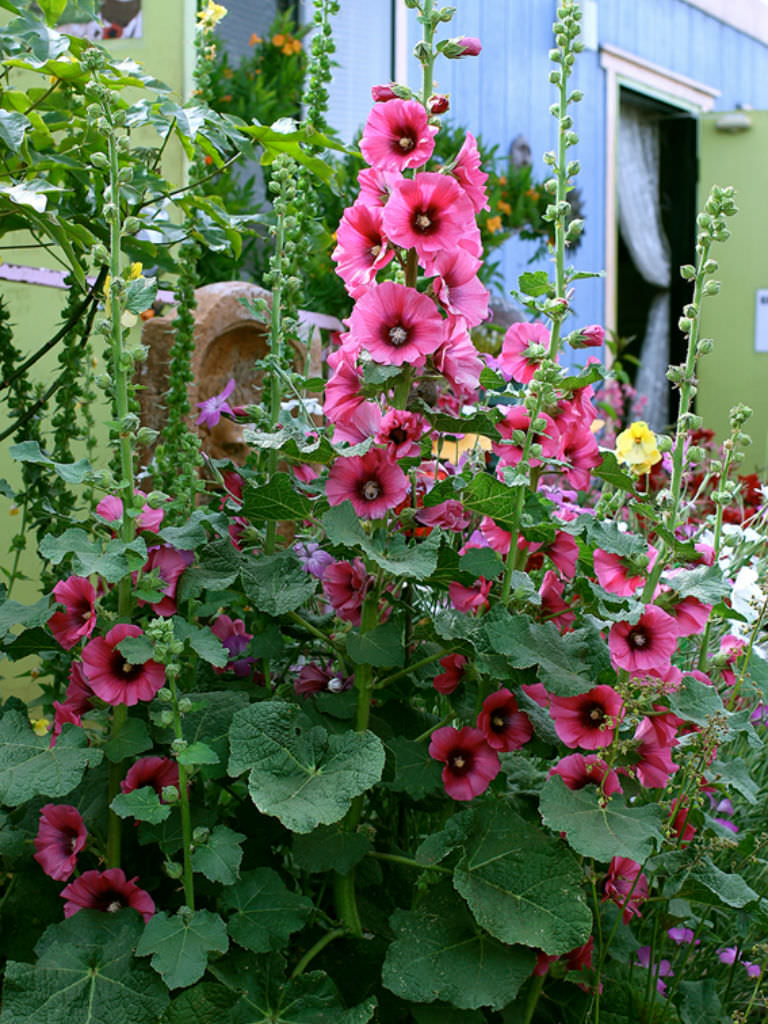
Alcea rosea (Hollyhock) World of Flowering Plants
Contents Plant family: Mallow family (Malvaceae) Genus: Hollyhock (Alcea) Species: Ordinary hollyhock (Alcea rosea) Trivial name: Hollyhock, common hollyhock, common peony Origin: Balkans, Southern to Eastern Europe, middle and far-eastern region perennial, herbaceous plant plant height up to 100 to 200 cm, rarely up to 300 cm.
-organic_2.jpg)
Common Hollyhock Assortment (Alcea rosea) organic The GoodToKnow
Plant taxonomy classifies hollyhocks as Alcea rosea. Sometimes, the genus name is given as Althea; but don't confuse the plant with rose of sharon, which may also go by that name. Among the more popular types are the black hollyhocks ('Nigra' cultivar ), plants with such dark flowers as to be almost truly black in color.

Alcea rosea Hollyhock Nigra 100 200 seeds Etsy
Hollyhock Alcea rosea Advertisement Growing Hollyhocks: Tips at a Glance Type Herbaceous flower Lifespan Perennial USDA Zones 3-8 Light Sun Water Dry soil Where to Plant Against a wall Design Tip Plant in clumps Companions Phlox, coneflower Peak Season Summer Hollyhocks: A Field Guide
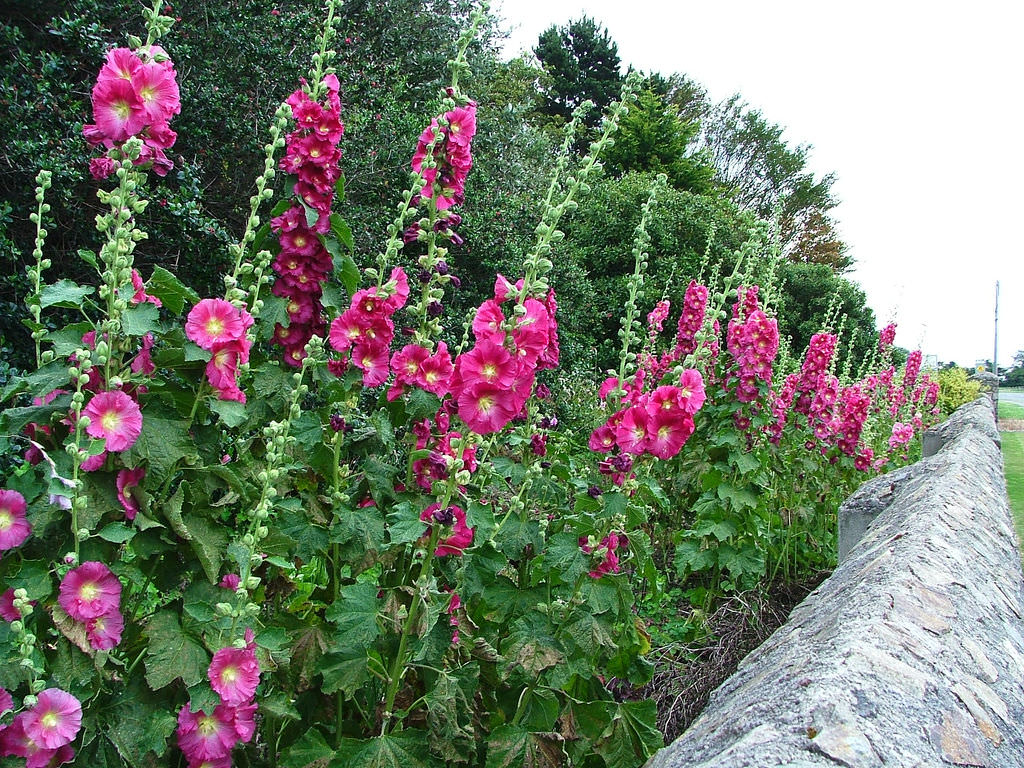
Alcea rosea (Hollyhock) World of Flowering Plants
Alcea rosea, or Hollyhocks, are herbaceous flowering plants that reseed themselves and can produce colonies of plants that return in the garden year after year. They are typically found in cultivated areas and rarely in "the wild". Their original habitat is unknown, but the plant is probably a cultigen that started out in Turkey.

Hollyhock (Alcea rosea) 'Halo Apricot' Buy Online at Annie's Annuals
Hollyhocks (Alcea rosea) are tall, showy flowering plants that are known for their distinctive vertical growth and vibrant blooms. Here are some key features of hollyhocks: Height and Growth: Hollyhocks can reach an impressive height, often ranging from 4 to 8 feet (1.2 to 2.4 meters) or even taller. They have a biennial or short-lived.
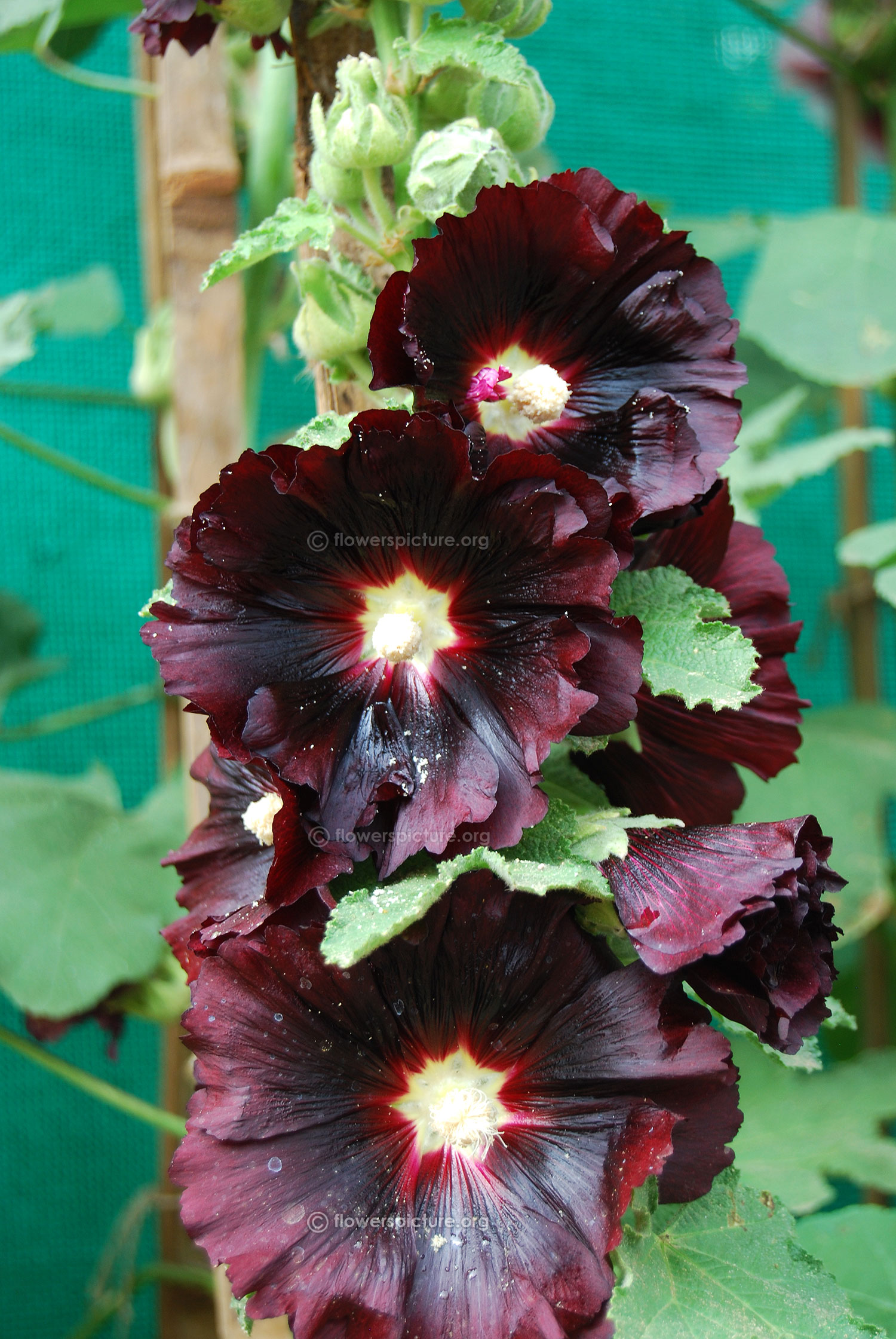
Hollyhock varieties, Alcea rosea varieties
Alcea rosea, commonly called hollyhocks, are old garden favorites. The flowers grow on rigid, towering spikes or spires which typically reach a height of 5-8' tall and usually do not require staking. Foliage features large, heart-shaped (3, 5 or 7 lobes), rough lower leaves which become progressively smaller toward the top of the spire.

"A deep pink hollyhock (Alcea Rosea)" by Philip Mitchell Redbubble
Characteristics Habitat terrestrial New England state Connecticut Massachusetts New Hampshire Rhode Island Vermont Flower petal color pink to red white Leaf type the leaves are simple (i.e., lobed or unlobed but not separated into leaflets ) Leaf arrangement alternate: there is one leaf per node along the stem Leaf blade edges
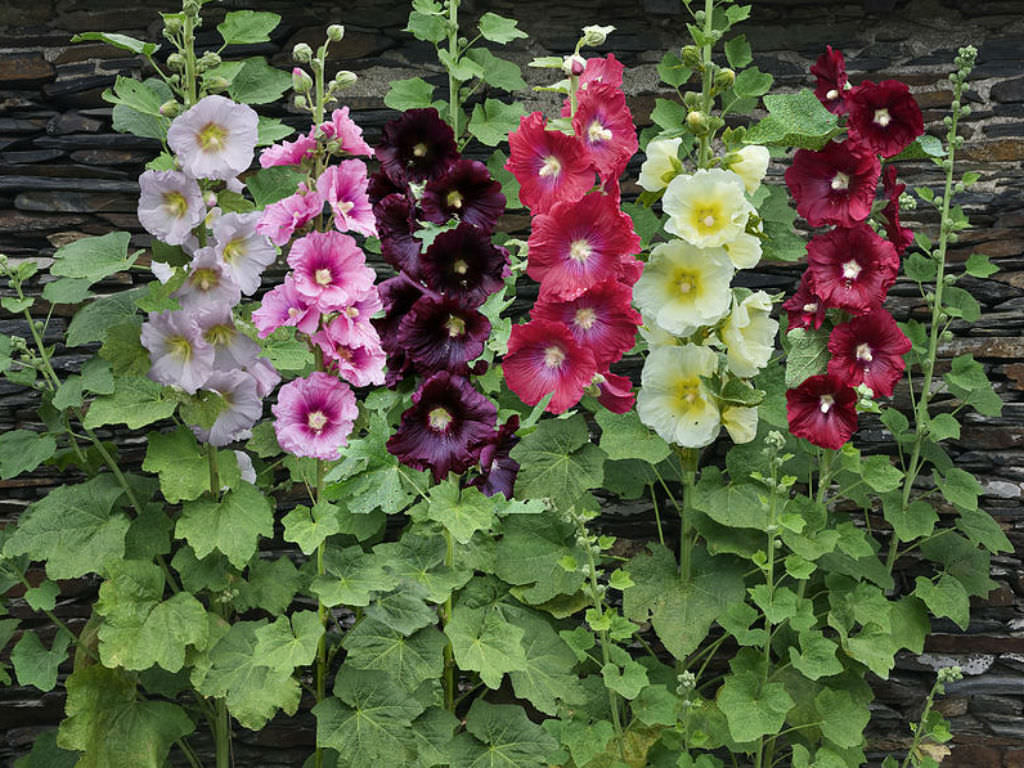
Alcea rosea (Hollyhock) World of Flowering Plants
Alcea rosea is commonly known as hollyhocks and are lovely flowering plants belonging to the genus Alcea. They are part of the Malvaceae family, which also contains Mallows and Hibiscus, and are classified as biennials, or short-lived perennials. However, they readily self-seed so they can persist for years in the garden.

How to Grow and Care for Hollyhocks Garden Chronicle
There are over 60 different species of hollyhock (Alcea). While the common hollyhock ( Alcea Rosea) is the most well-known and cultivated species, others would look just as at home in a traditional cottage garden setting. Most are tall, pretty, perennial or biennial flowering plants that grow to reach as much as 8 feet tall.

Hollyhock Flower, Alcea rosea Plant Care and Grow from Seeds
Medicinal Qualities All parts of the hollyhock plant have been used for natural remedies. In recent years, it has been discovered that the hollyhock bears more than a passing resemblance to its relative, common marshmallow (Althaea officinalis). In fact, these two plants share similar chemical constituents.

Hollyhock (Alcea rosea) 'Nigra' / 'Single Black'' Buy Online at Annie
Alcea rosea PEACHES 'N' DREAMS™ is a captivating cultivar of the traditional hollyhock, standing out with its delightful pastel peach-toned blossoms from mid to late summer. It presents double, frilly blooms that are generously packed on sturdy stalks. The petals dance in shades from soft peach to cream, imbuing gardens with a romantic aura.

Hollyhock Seed Mix Alcea rosea Heirloom Hollyhock Seeds Etsy
The optimum amount of sun or shade each plant needs to thrive: Full Sun (6+ hours), Part Sun (4-6 hours), Full Shade (up to 4 hours). Hollyhocks provide excellent architectural height in the garden and make good backdrops for lower growing perennials. Try growing them in the cottage garden style by planting them up against a wall or picket fence.

Hollyhock; Alcea rosea red
Alcea rosea, the common hollyhock, is an Malvaceae. It was imported into Europe from southwestern China during, or possibly before, the 15th century. [2] William Turner, a of the time, gave it the name "holyoke" from which the English name derives.
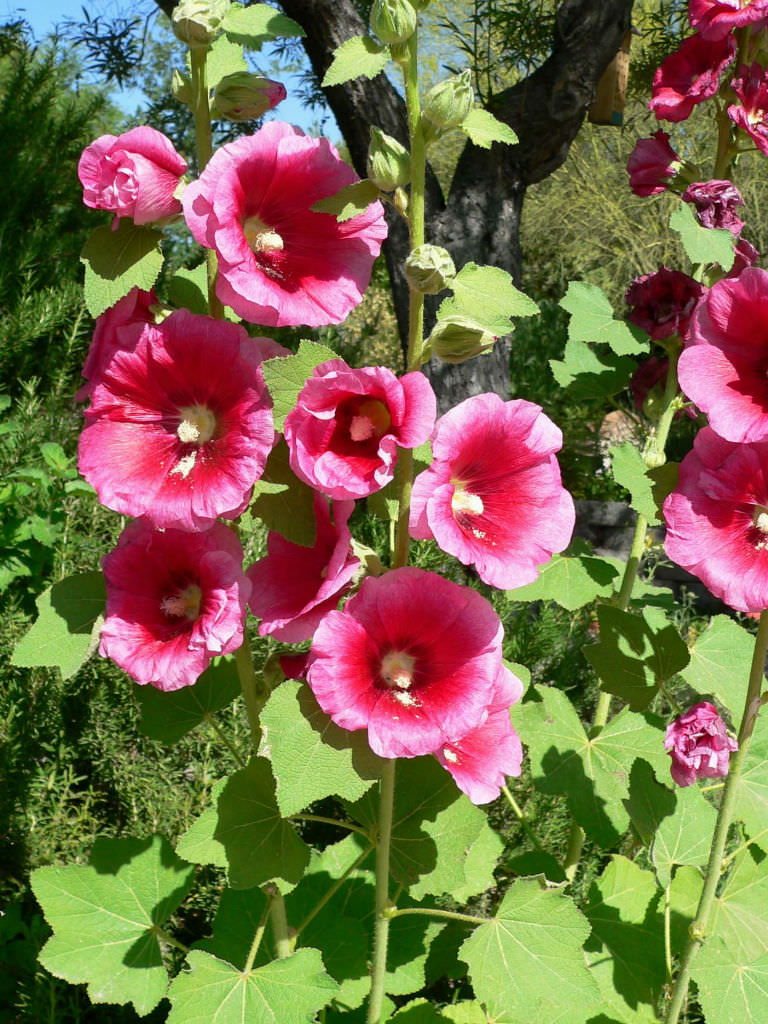
Alcea rosea (Hollyhock) World of Flowering Plants
Providing architectural height to borders, Alcea rosea 'Nigra' (Hollyhock) is a vigorous biennial or short-lived perennial boasting tall, sturdy spikes of funnel-shaped, deep black-chocolate, single flowers adorned with a bright buttery-yellow throat.
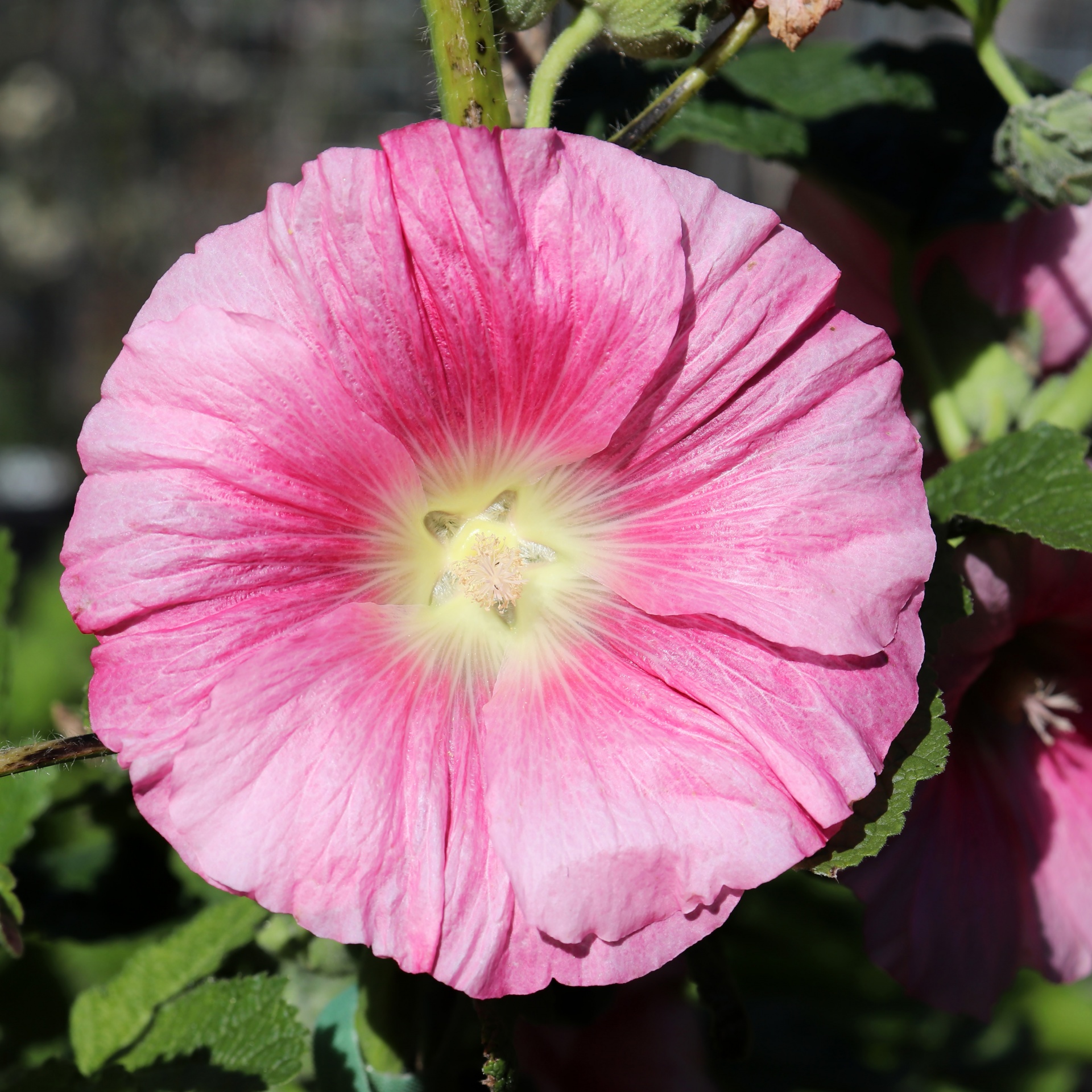
Hollyhock Flower Alcea Rosea Free Stock Photo Public Domain Pictures
A classic cottage garden staple, hollyhocks (Alcea rosea) bloom mid-summer with numerous flowers on tall spikes. Many of the most common varieties are biennials, meaning they complete their lifecycle over 2 years. The first year is spent growing foliage and storing energy. In the second year, the stalks shoot up, flowers bloom and seeds form.

Medicinal Plants Alcea rosea Hollyhock Gulkhaira stockros shu kui
Hollyhocks ( Alcea rosea) are impressive garden favorites that will add a hint of nostalgia to your landscape. These plants originated in Europe and can be grown with little effort. Purple Hollyhock photograph by Patrick; CC. Perfect for adding a vertical element to your garden, hollyhocks are a low-maintenance, short-lived perennial.